Conventional stormwater capacity is under pressure from intensive residential, commercial and industrial development. Most surfaces that aren’t built on are paved producing large volumes of runoff in downpours.
Extreme weather events overwhelm over-burdened systems culminating in catastrophic flooding. Councils and developers in New Zealand by-and-large still take the traditional engineered approach to stormwater design, having little or no knowledge of SuDS – Sustainable urban Drainage Systems.
As a landscape architect Nigel has training and hands-on experience in natural stormwater design. He’s keen to discuss the SuDS approach to stormwater management at Wanaka A&P Show, Fri/Sat 13-14 March 2020, Site W7.
Environmental Technology
When we make the effort to understand natural systems and how water’s continually exchanged between soil, plants and atmosphere, we can use this knowledge to integrate natural processes into stormwater design. Then we can REDUCE runoff instead of investing huge amounts of $$$ into expensive tanks, pipes and culverts that require ongoing maintenance and have a limited life.
Other important advantages of partnering with plants:
- the system can largely be understood by looking at it
- easily maintained (nothing hidden away underground)
- beautiful landscape
- beneficial to wildlife
- climate-change resistant
- opportunity for healthy outdoor living and learning about nature
- approx 15% less expensive to establish and maintain than a piped system
The images, diagrams and information below are taken from a single large poster that Nigel will display at the Wanaka A&P Show.
All material © Nigel Cowburn
Click on ANY image below to enlarge.
This planted stormwater basin is designed to detain stormwater and settle out sediments. Water soaks into the ground, evaporates into air and some flows on to the next basin, sometimes known as treatment train or treatment chain.
In this diagram planting utilizes various plant forms to remove excess water from the stormwater system by shifting it to the atmosphere.
.
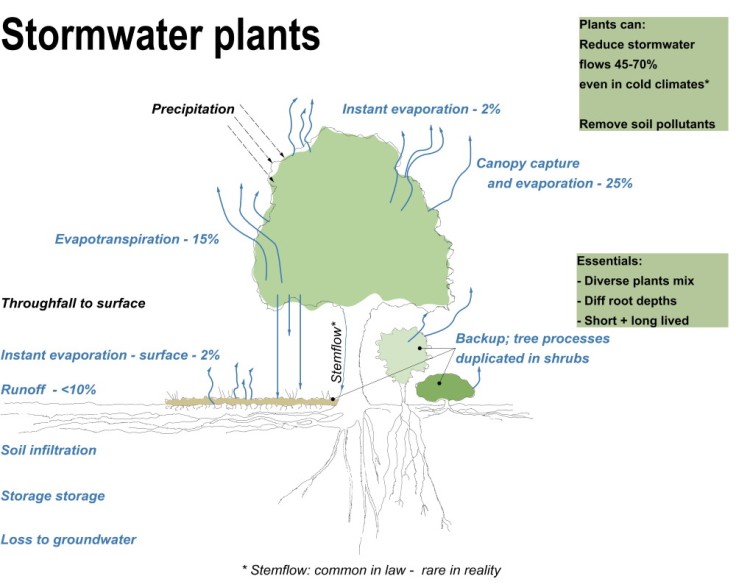
— a selection of plant forms suited to stormwater systems
Hard SuDS (mechanical) and soft SuDS (planted) are both employed in designing stormwater solutions:
Mechanical e.g. chain, bricks and stones, weir, porous lime chip. They detain the flow and promote evaporation.
Planted e.g. (i) tree against a wall, it’s canopy assisting water evaporation and roots assisting drainage (ii) gravel-grass in a carpark: gravel helps avoid soil compaction (maximising the soil’s water-holding capacity) and grass helps maintain separation of stones while roots act as vertical drainage channels (iii) swales
Here’s a case study of a real industrial site with no ability to drain stormwater off-site, it’s an old shallow quarry. The existing development is a C19th factory complex and encroaching urban development means drainage from the site is essentially zero.
SuDS : Processes and Outcomes
Wanaka A&P Show, Fri/Sat 13-14 March 2020
Site W7
intro text by Liz ; poster materials © Nigel Cowburn ; Growplan 2020

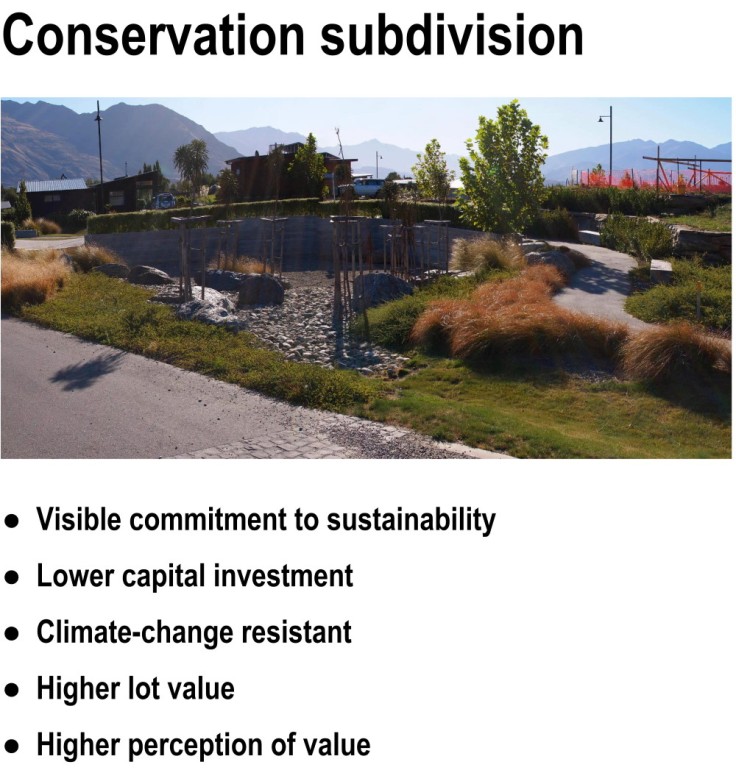
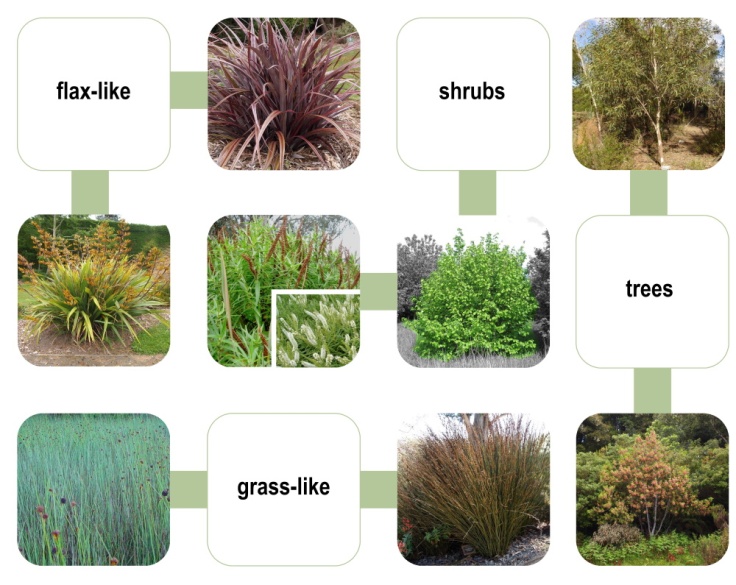
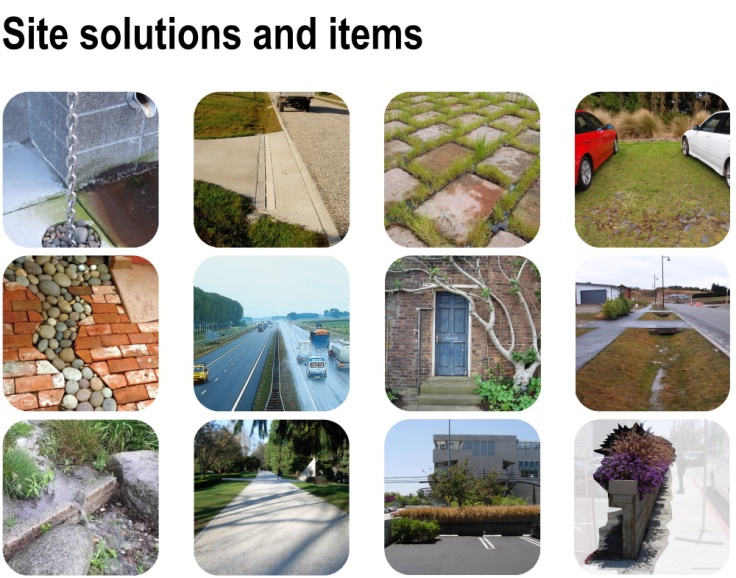
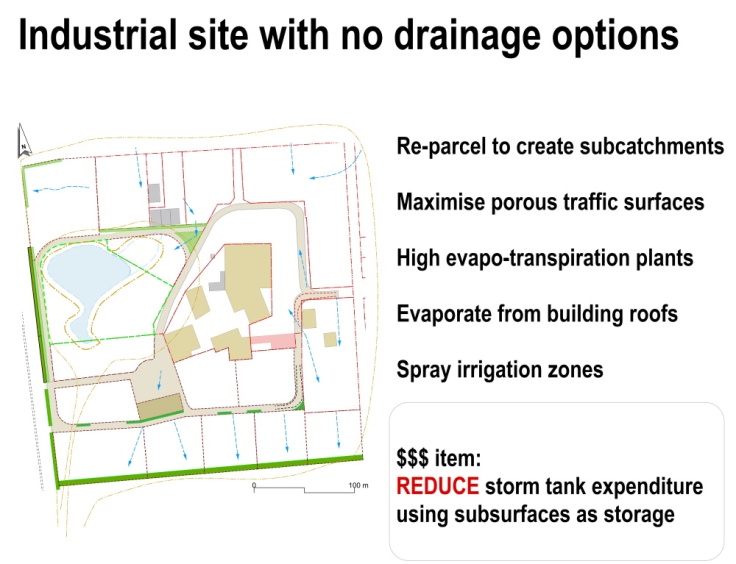
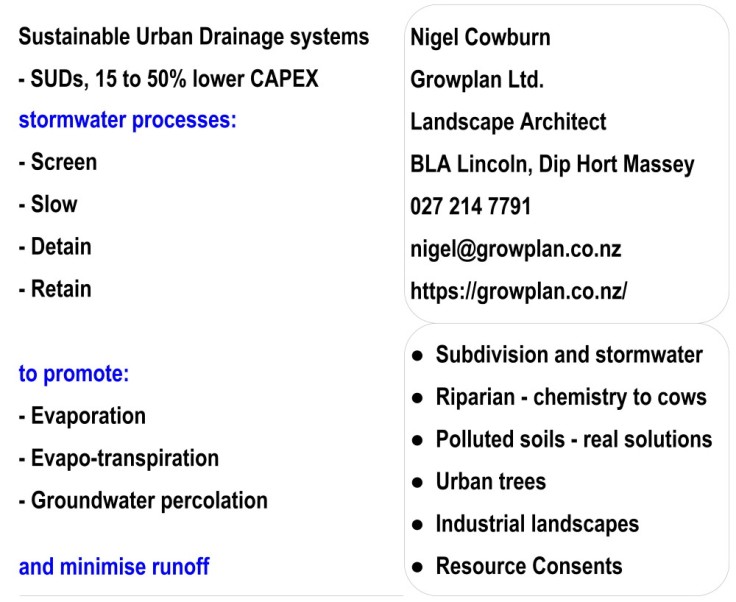
Working with nature rather than trying to fight it—we need more of that! Nice presentation Liz & Nigel.
Thank you Ellen!